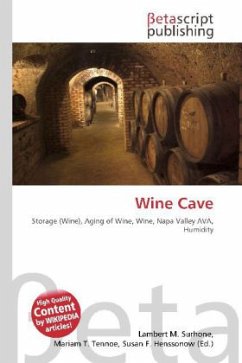Please note that the content of this book primarily consists of articles available from Wikipedia or other free sources online. Wine caves are subterranean structures for the storage and aging of wine. They are an integral component of the wine industry world wide. The design and construction of wine caves represents a unique application of underground construction techniques. The storage of wine underground offers the benefits of energy efficiency and optimum use of limited land area. Wine caves naturally provide both high humidity and cool temperatures; key to the storage and aging of wine. The history of wine cave construction in the United States dates back to the 1870s in the Napa Valley region. Jacob Schram, a German immigrant and barber, founded Schramsberg Vineyards near Calistoga, California in 1862. Eight years later, Schram found new employment for the Chinese laborers who had recently finished constructing tunnels and grades over the Sierra Nevada Mountains for the Union Pacific Transcontinental Railroad. He hired them to dig a network of caves through the soft Sonoma Volcanics Formation rock underlying his vineyard.
Bitte wählen Sie Ihr Anliegen aus.
Rechnungen
Retourenschein anfordern
Bestellstatus
Storno








